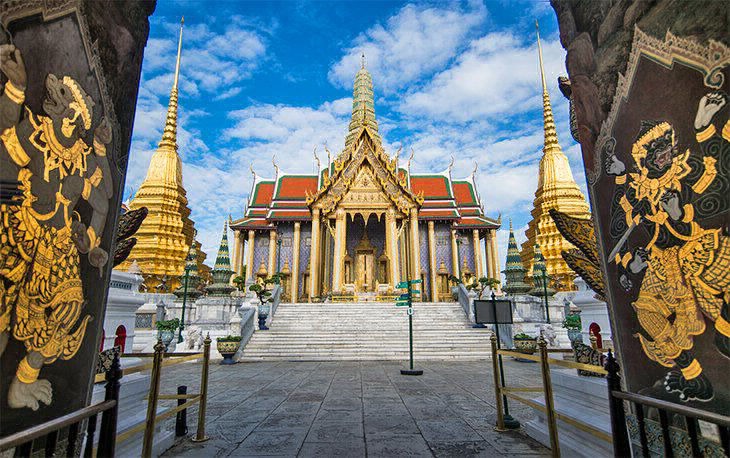
Travel Guides & Information

Beautiful Temples in Thailand
There are over 40,000 temples in Thailand. Most are active while others are in ruins – as is the case of the many structures still standing in the historical parks of Ayutthaya and Sukhothai.
As a Buddhist country, it's no surprise that the bulk of wats in the country are Buddhist sanctuaries, although Hinduism and other religions are also well-represented with colorful temples. Thai wats are not only a place to pray for good fortune, but also a place to make merits, light some incense for your ancestors, or talk to the resident monks during difficult times.
The beauty of Thai temples has not escaped the attention of foreign visitors, who often make up their own temple tour to discover and explore as they travel from city to city.
While it would be truly impossible to come up with even a tiny partial list of temples to visit, we've collected some of the most popular and most stunning wats around the country that are well worth a visit.
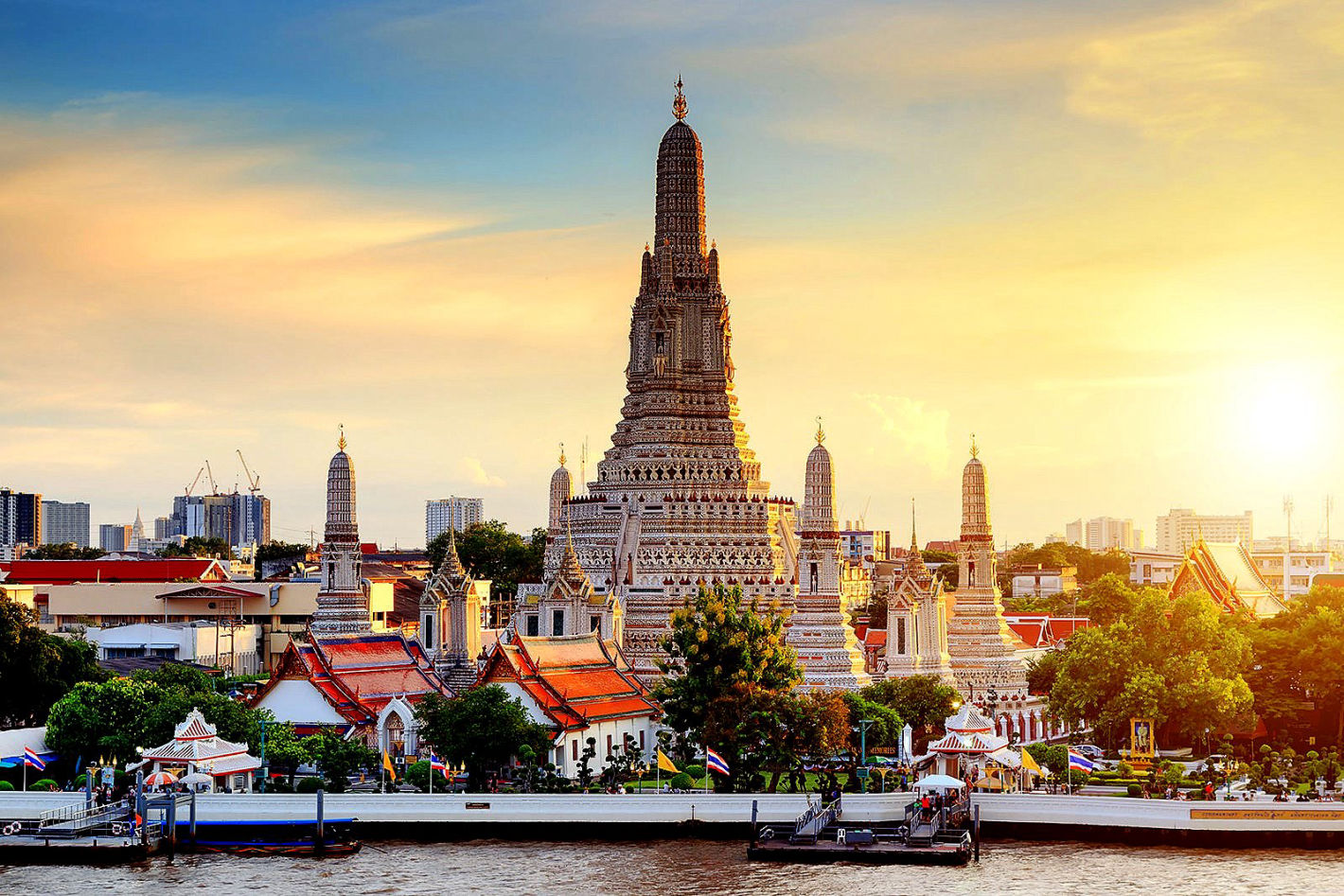
Wat Arun
Wat Arun, also known as the "Temple of Dawn," sits on the banks of the Chao Phraya River in Bangkok. Dedicated to the Hindu god Aruna, Wat Arun is a particularly stunning sight in the early morning, as the sunlight reflects on the temple's walls, decorated with Chinese porcelain fashioned into ornate flower petals and glass mosaics in silver and reddish colors.
The temple's 70-meter-tall prang (spire) can be seen from the river, and it's one of Bangkok's most famous landmarks. You can even access Wat Arun from the water by hopping on a water taxi on the other side of the river, where Wat Pho sits.
One of the highlights of visiting this temple is the option to climb the very vertical staircase built on the outdoor wall. If you're not afraid of heights and can manage the narrow steps, you'll be rewarded with beautiful views over the Chao Phraya River and the gabled roof of other temples and structures across the water.
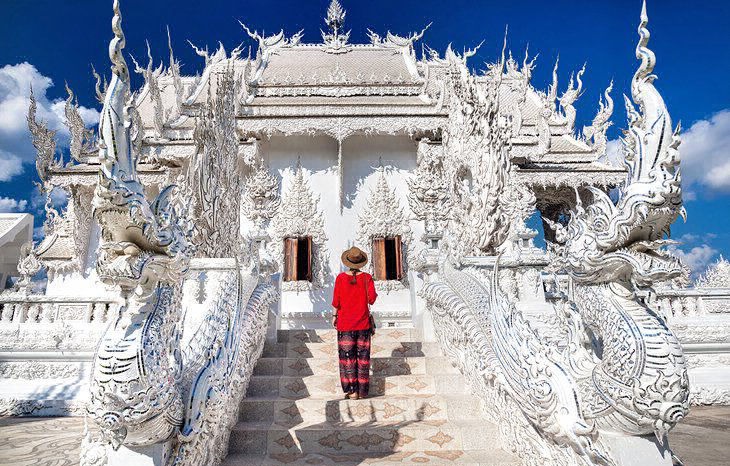
Wat Rong Khun
Wat Rong Khun in Chiang Rai, known in English as "the White Temple," is actually not a temple at all – or at least not anymore. Abandoned and in ruins, the original Wat Rong Khun was "adopted" by a local artist in the 1990s, who then spent the next few years transforming it into one of the most stunning privately-owned art exhibits in the country.
The main building of the temple complex (the usobot) is now a sort of art gallery – only accessible by crossing a bridge built over a pond – while some of the other buildings have been designated for meditation and as training rooms and a learning center. And while the former temple is already stunning, renovation work hasn't stopped – and it's not expected to be finished before 2070. The completed compound will consist of nine buildings, including living quarters for monks.
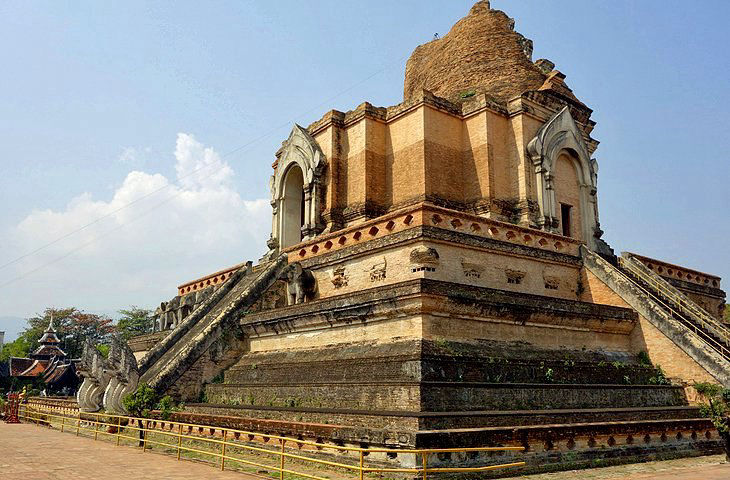
Wat Chedi Luang
Wat Chedi Luang, located in Chiang Mai was built more than 600 years ago. Ancient ruins are what remains. The mysterious temple draws visitors from all over the world. Elephant statues surround the exterior of the building and it is important to the culture and history of Chiang Mai. If you love archaeology and history, this is the perfect tourist spot for you.
Ruins aren't exactly a rare sight in Chiang Mai, or in Thailand generally, for that matter. But there's something about Wat Chedi Luang that is particularly beautiful and haunting. Constructed in 1401, the imposing structure was damaged during an earthquake in 1545. But it remains remarkable today, and you can still see the massive elephant carvings that adorn it.
Beneath a huge gum tree on the left of the entrance to the precinct stands a delightful little temple, the Lak Muang. Built in 1940 on the site of an earlier wooden building, the shrine is the abode of Chiang Mai's guardian spirit (Lak Muang). According to tradition, if the great tree should fall, disaster will overtake the city. The temple is something to behold at any time of day, but it's particularly lovely at night, when it is all lit up.
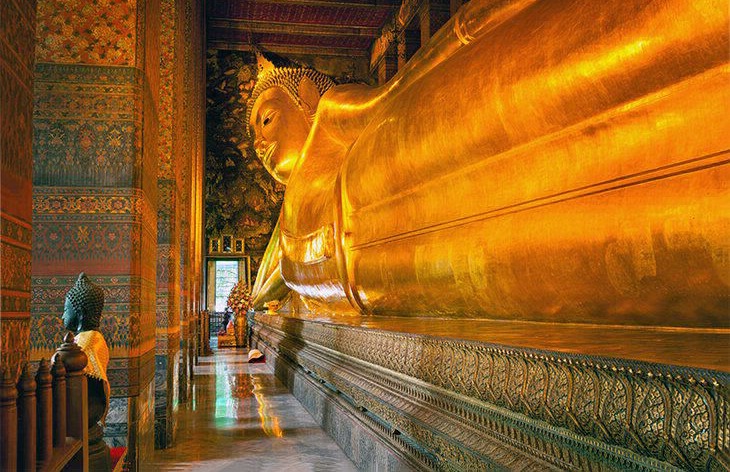
Wat Pho
Wat Pho, also known as the Temple of the Reclining Buddha, is one of the largest temples in Bangkok. The entire temple grounds cover an area of over 80,000 square meters, but only half of it is open to visitors – the other half houses a school and the monk's residential quarters.
Although there are several buildings in the open part of the temple, most visitors come here for the giant reclining Buddha, a 46-meter-long and 15-meter-tall statue covered in gold leaf. While the entire statue is stunning, it's the feet of the Buddha that attract the most attention. Inlaid with mother of pearl and inscribed with auspicious symbols, the feet also display a chakra (energy point) right in the center. Lining up the walls of the hall, visitors will find 108 bronze bowls, where you can drop special coins (brought from the temple) for good health and fortune.
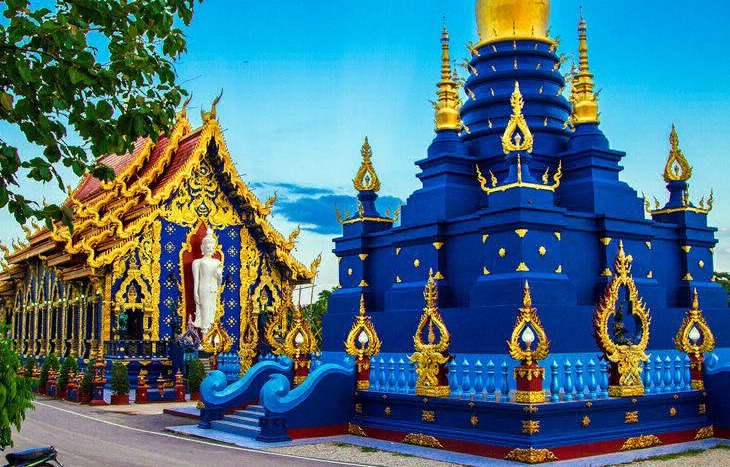
Wat Rong Seua Ten
Wat Rong Seua Ten is best known to English-speaking visitors as the Blue Temple or "Templo Azul." Located just outside the city, this is one of Chiang Rai's newest and most stunning wats, as well as one of the most visited.
The Blue Temple is relatively small, but the gold ceilings and deep sapphire blue color of its walls make it almost hypnotic. The two colorful Nagas –semi-divine snake-like creatures – that sit on either side of the temple's gate, add to the magnificent feeling.
Inside, carved Buddha statues, mosaic-like blue paintings, and murals continue the magical experience, and a large white Buddha statue welcomes visitors.
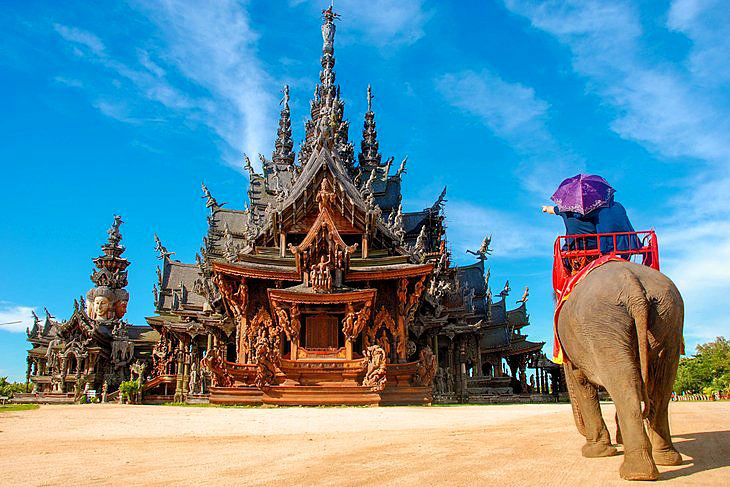
The Sanctuary of Truth
A temple-like structure that isn't officially a temple, the Sanctuary of Truth in Pattaya is unique in many ways. Built almost entirely of teak wood to look like a cross between a palace, a museum, and a traditional Buddhist wat, the Sanctuary of Truth is the brainchild of a local artist, Mr. Lek Viriyahphan – who, inspired by the ancient temples of Ayutthaya, spent a couple of decades designing the structure until his death in the year 2000. Still growing and under construction, the building was always meant to be a place where philosophy, faith, and art meet and coexist.
Both outside and inside the sanctuary, thousands of detailed carvings of mythical creatures, deities, and elephants adorn the walls and the hallways.
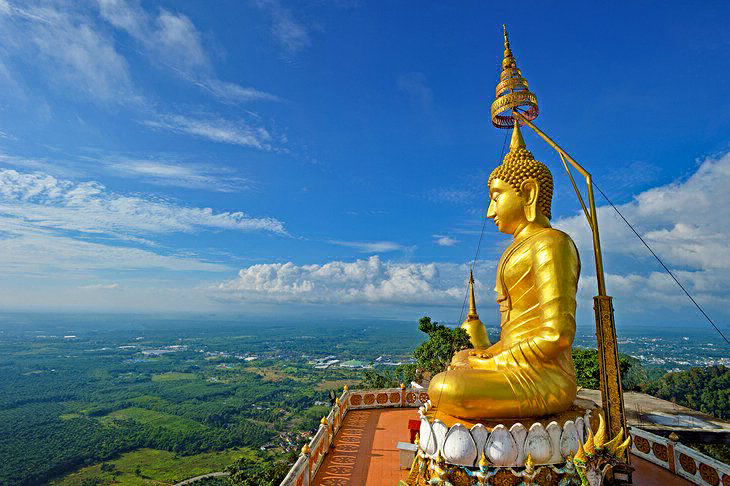
Wat Tham Suea
The Tiger Cave Temple (officially Wat Tham Suea) is located just outside Krabi. The complex lies on a few different levels, with a 1,260-step staircase (some steps are over 30 centimeters high) passing by caves filled with tiger print paws and golden Buddhas on the way to the summit. For those who brave the 278-meter elevation of the staircase, the reward is a massive golden Buddha, a tiny shrine, and some of the best open views over the town below.
Tropical jungle surrounds the hill and the steps. The caves that are part of the complex are well worth a visit as well. Some contain small statues, some are popular spots for Thais to light incense, and others are great for just a break in a cool, peaceful space before you continue on up the staircase.
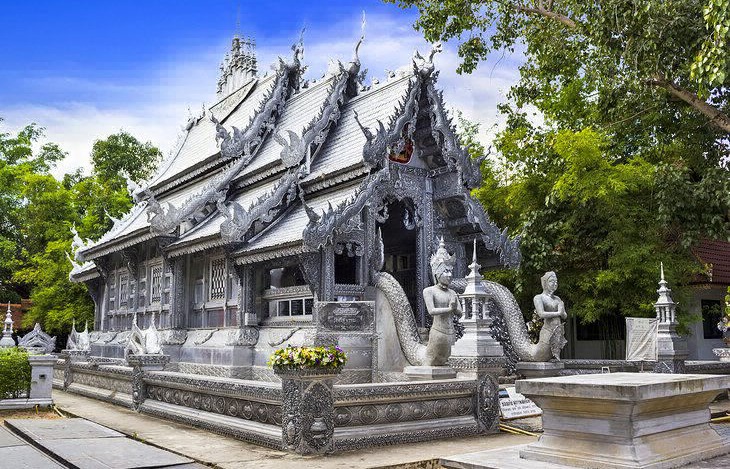
Wat Sri Suphan
The Silver Temple (officially called Wat Sri Suphan) owes its name to its unique appearance, with walls and ceiling completely covered in either pure silver or an alloy and zinc mix. Inside, even the statues and some of the decorations are covered in silver, as are the frames of the many mirrors – together, these form a magical bouncing of light and images that make the temple feel never-ending in every direction.
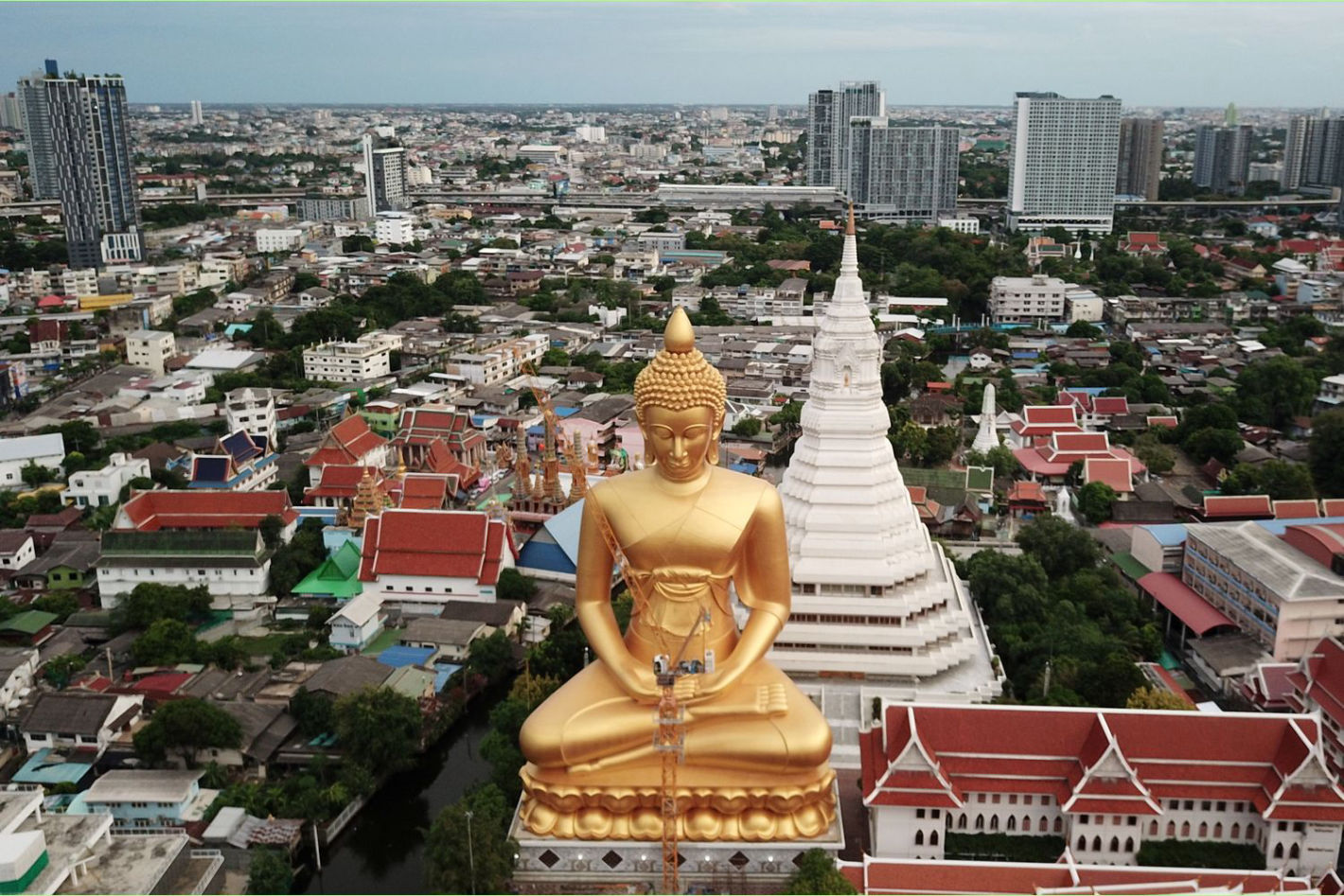
Wat Pak Nam
Located on a 20 rai site, Wat Paknam is an old temple founded around 1610 during the Ayutthaya kingdom. The temple was in ruins until Luang Pu Sod from Wat Pho became the abbot of Wat Paknam in 1916 during the period of King Rama VI. The temple still houses artefacts from the Ayutthaya period such as the principal Buddha image in its ordination hall and Ho Tri, a library for keeping the Tripitaka.
The gigantic Buddha sculpture, built in the meditation posture of a lotus flower, is 69m tall, or about the height of a 20-storey building, and 40m wide. It appears as if the image is coated with gold but it is actually made of pure bronze, according to the temple.
Started in 2017, the Buddha was completed in 2021 and has been given the name Phra Phuttha Dhammakaya Thepmongkol. The project, which cost 100 million baht, was initiated following a dream of the late highly respected abbot Phra Mongkol Thepmuni, better known as Luang Pu Sod Chanthasaro. He was the founder of Dhammakaya teachings that led to the establishment of Wat Dhammakaya in 1970.
When you visit the temple, you will see a huge white pagoda next to the seated Buddha image. First opened in 2012, Phra Maha Chedi Maha Ratchamongkol is the name of the 80m-tall multi-tier stupa.
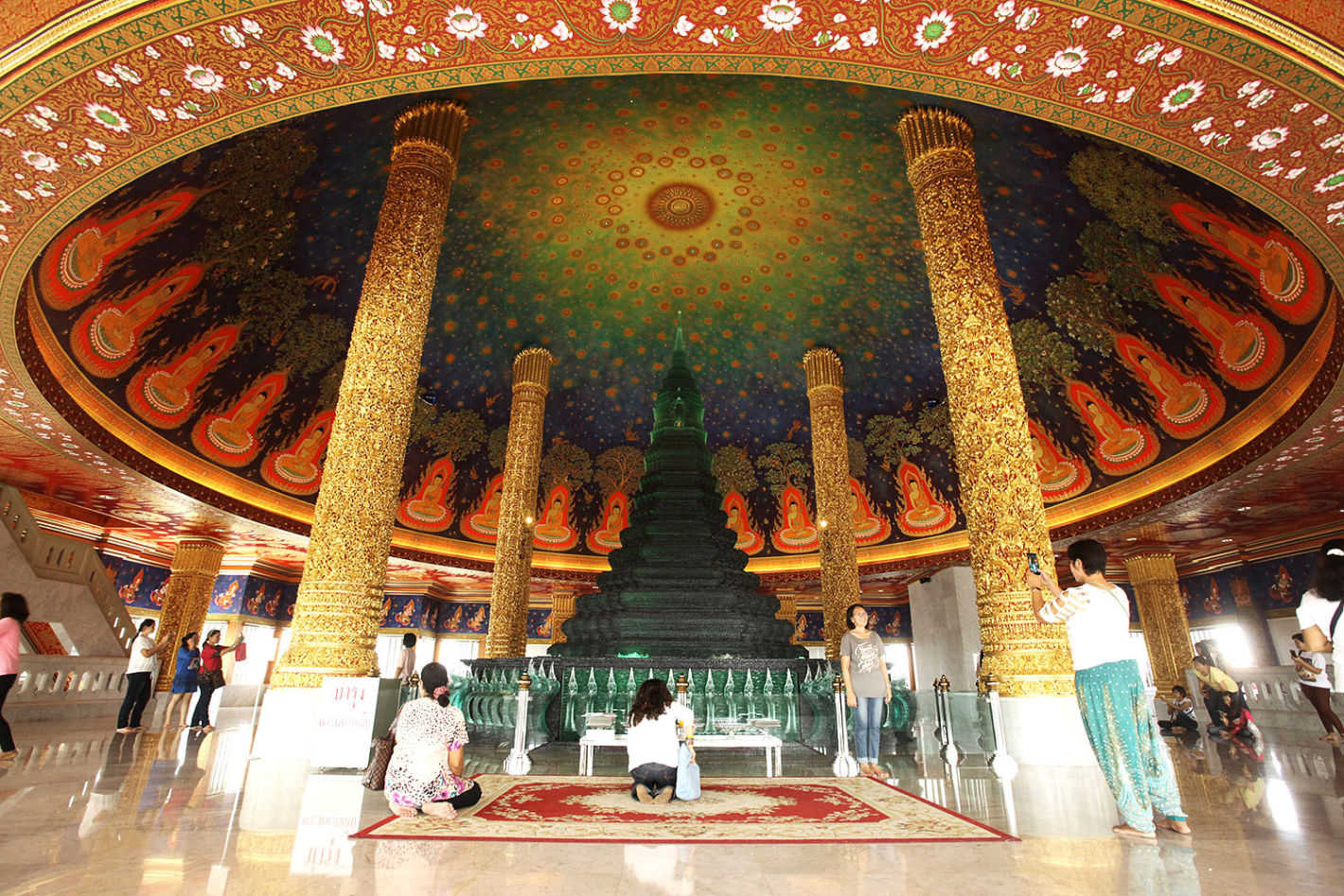
The structure features five storeys. The top floor is where you can worship Buddha relics housed in an elegant 8m-tall green glass pagoda. A life-sized sculpture of Luang Pu Sod made of gold is exhibited on the 4th floor while personal collections of the present abbot, Somdej Phra Maha Ratchamangalacharn or Somdej Chuang, are displayed on the 3rd floor. The 2nd floor is a prayer and meditation hall while the 1st floor is a museum displaying general items such as antique cars owned by the abbot. The white pagoda is also known as Wat Paknam Museum.
If you're in Bangkok you can reach the temple by taking the BTS Skytrain across the Chao Phraya River and get off at Wutthakat station or Talat Phlu station.
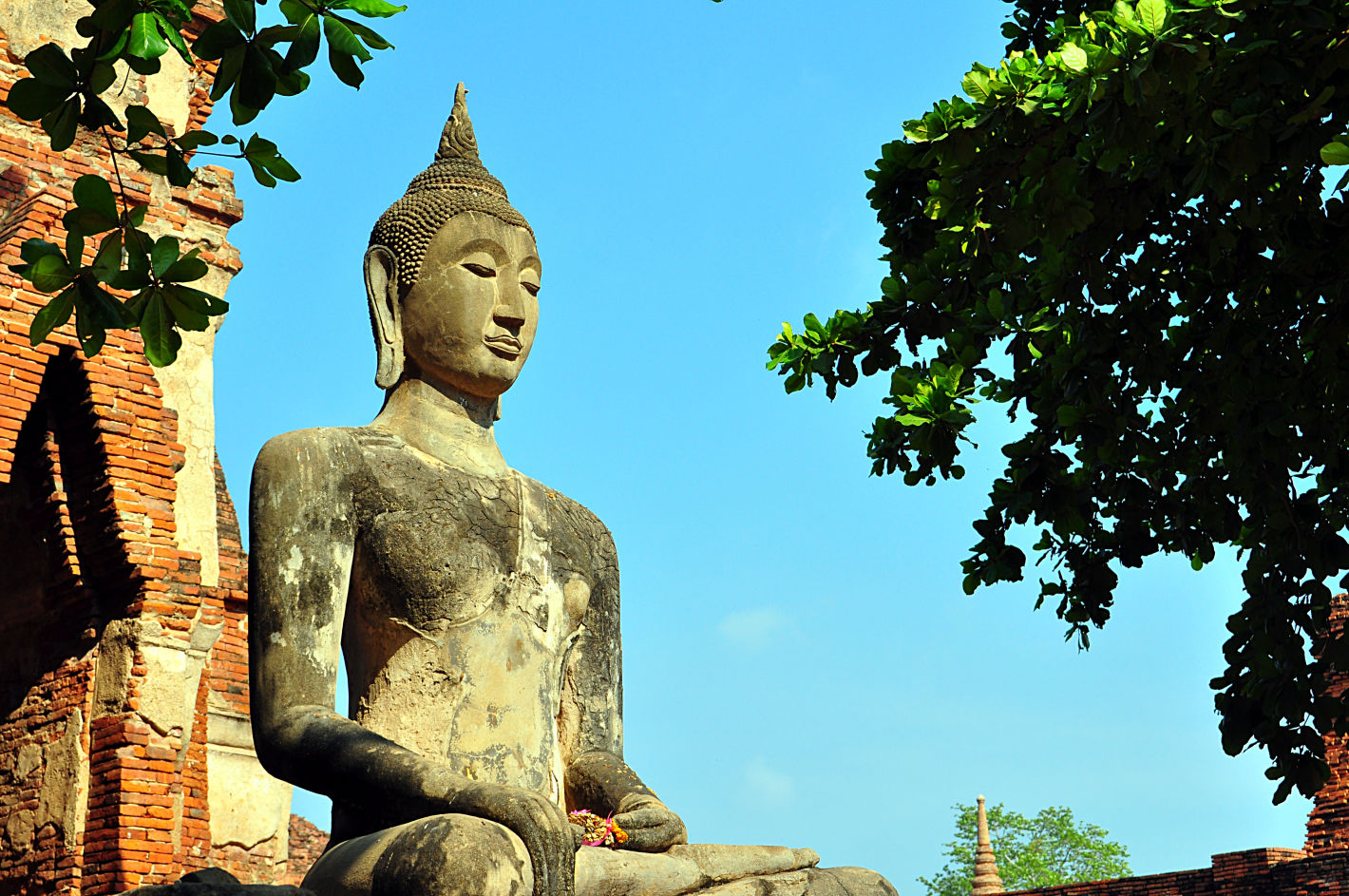
Wat Mahathat
Ayutthaya's most famous temple is located in the center of a historical park and surrounded by dozens of other stunning ruins. Ayutthaya was once the capital of Bangkok and, around the year AD 1700, the largest city in the world.
Wat Mahathat might not be the largest temple in Ayutthaya, but the impressive ubosot (ordination hall) and main viharn (the living quarters) are still stunning. Although the central prang (tower-like spire) collapsed a long time ago and only the base remains, the temple complex is still a stunning group of temples that attracts many visitors.
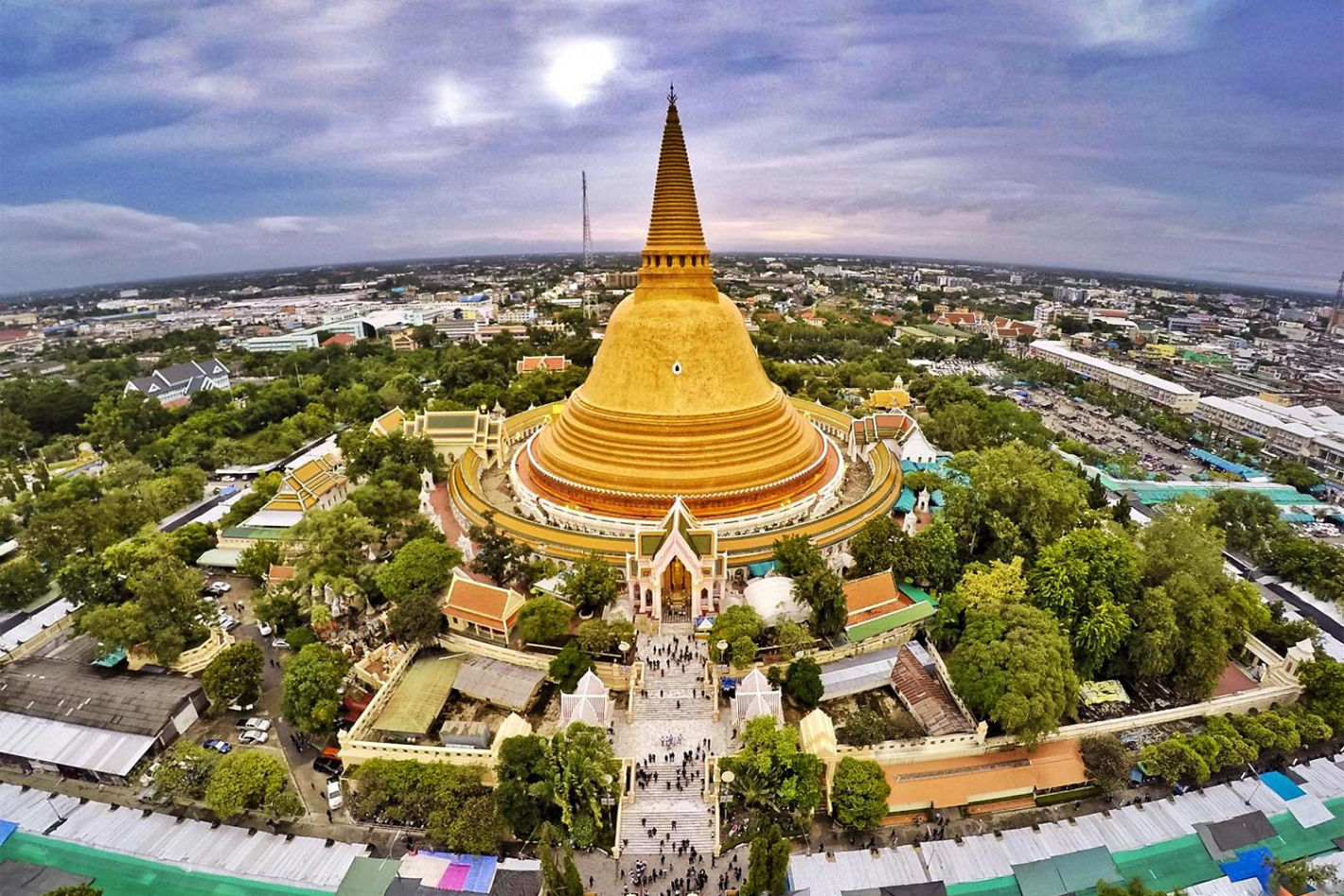
Nakhon Pathom
Just 45 minutes away from the center of Bangkok is Nakhon Pathom, famous for being home to both the world's tallest golden stupa and to the only female Buddhist monastery in Thailand. This quiet province receives fewer foreign visitors than other areas in Thailand, and it's a great place to discover the "real Thailand" most tourists never get to see.
Nearby, the Western-style Sanam Chandra Palace is an unexpected sight. Built in 1907 by future King Rama VI, the palace is set on the banks of a lake, has a Disney-like bridge that connects it to other buildings in the complex, and is surrounded by teak houses and a well-manicured garden.
A short drive away is the Jesada Car Museum, home to a private collection of over 500 vehicles, from three-wheeled cars and a DeLorean (made famous by Back to the Future) to small helicopters and even a London double-decker bus.
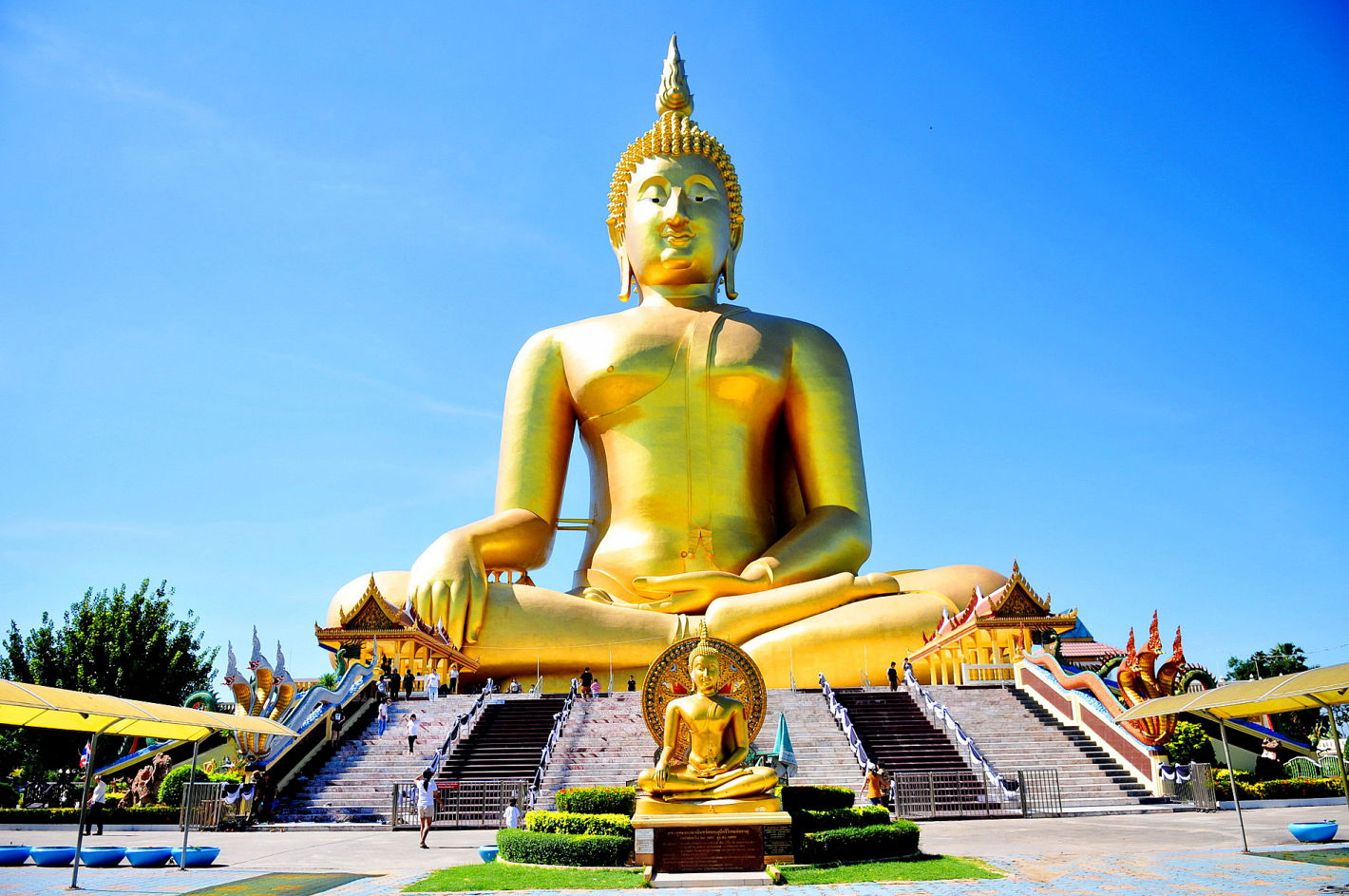
The Great Buddha of Thailand
The Great Buddha of Thailand, also known as The Big Buddha, The Big Buddha of Thailand, Luang Pho Yai, Phra Buddha Maha Nawamin, and Mahaminh Sakayamunee Visejchaicharn, is the tallest Buddha sculpture in Thailand, the second tallest in South East Asia, and the ninth-tallest in the world.
Located in the Wat Muang temple in Ang Thong Province, the gigantic Buddha is depicted in the seated posture called 'mara vichai' and stands 92 m (300 ft) high, and is 63 m (210 ft) wide. Similar to a thirty storey building.
Mara vichai is an attitude of Buddha in Thai art of which the seated Buddha is putting his hand in the relax posture towards to the ground, loosely holding his knee. The other hand is on his lap. The gesture of the hand reaching the ground also refers to the attitude as well.
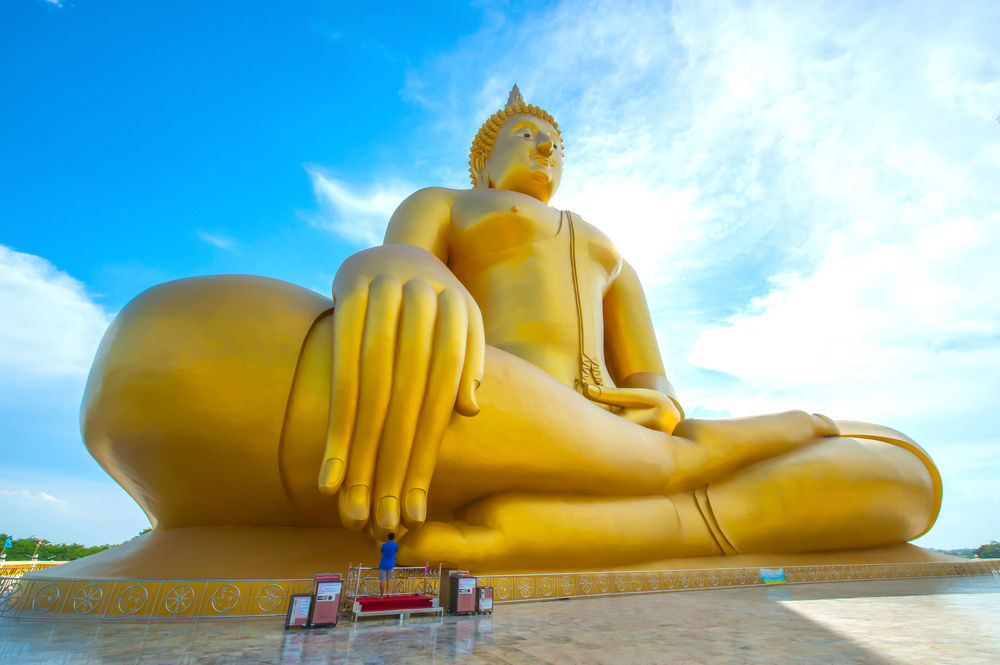
It was built due to the initiative of the late Luang Pho Kasem, the first abbot of Wat Muang, which is an old temple founded during the Ayutthaya period. At that time, Ang Thong was an outpost, so when the Ayutthaya kingdom lost its last battle in 1767, the town was burnt down and the temple was damaged and abandoned.
Two centuries later, Luang Pho Kasem found the ruined temple during his thudong (long walk) pilgrimage in 1982. One day during his meditation, he had a vision of two old Buddha images, Luang Pu Khao and Luang Pu Daeng. From then, he began to renovate the site. Bit by bit and with the help of locals, the renovation brought back the glory years of the temple.
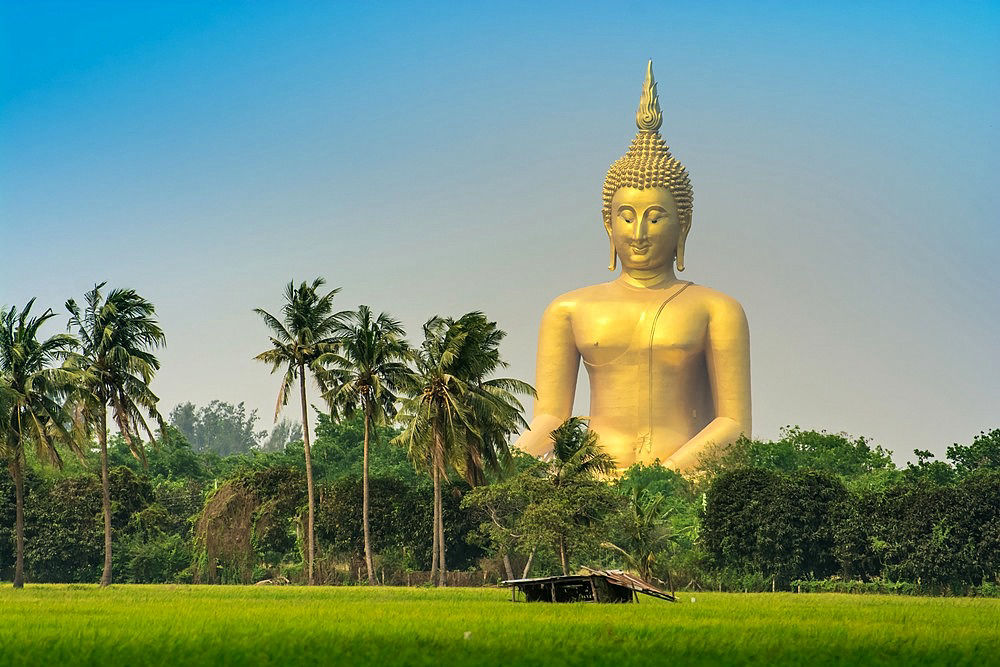
In 1986, the temple was granted Visungamasima or the legal status of a Buddhist temple as a juristic person. In 1991, the late abbot launched the Luang Pho Yai project, aiming to celebrate the 85th birthday of His Majesty King Bhumibol Adulyadej the Great in 2012 as well as to mark the 80th birthday of Her Majesty Queen Sirikit The Queen Mother that year.
Construction of the gigantic Buddha sculpture commenced in 1991, and was completed in 2008 at a cost of 131 million baht. Since then, the temple has been a tourist attraction and Luang Pho Yai is now a famous landmark in the province.

Wat Saket
One of the oldest temples in Bangkok and a sacred pilgrimage site during the Loy Krathong festival in November, Wat Saket is also a sight to behold. The temple sits at the top of an 80-meter-tall hill, from where the stunning views over Bangkok Old Town will make you forget about the heat and the climb to get you here.
The grounds around the temple are decorated with ancient trees, a wall of bells, golden Buddha statues, and a shaded 300-step staircase that takes visitors up to the chedi.
The grounds around the temple are decorated with ancient trees, a wall of bells, golden Buddha statues, and a shaded 300-step staircase that takes visitors up to the chedi.
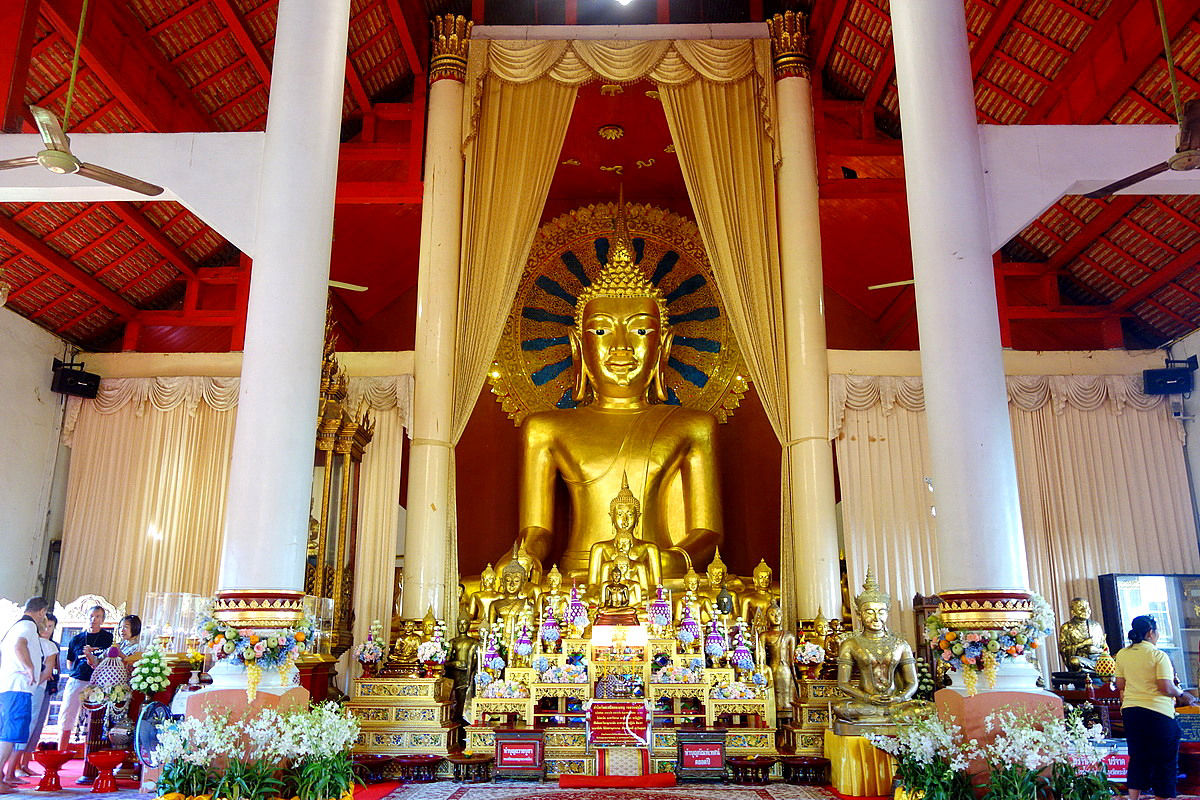
Wat Prasingh
Wat Phrasingh in Chiang Mai, stands at the heart of the Old City, which is where travelers spend much of their time. Amid the sois, or alleys, and heavy motorbike traffic, Wat Prasingh rises at the end of Rachadamnoen Road.
It is the largest wat in the city and dates to 1345, when an ancient king built it in his father's honor. The father's ashes are still buried on the grounds – but don't let that spook you from visiting. The decadent structures are impressive, and it's an especially great place to check out on Sunday afternoons.
The wat's most sacred shrine is a small building called the Phra Viharn Lai Kam, erected during the reign of King San Muang Ma (1385-1401) to house the famous, now sadly headless, Sukhothai-style figure known as the Phra Singh Buddha.
According to tradition, the Buddha, in the familiar "calling the earth to witness" pose, came to Thailand from Ceylon, finding its way first to Ayutthaya and then to Kamphaeng Phet, Chiang Rai, Luang Prabang, and back again to Ayutthaya before, in 1767, arriving in Chiang Mai, where it has been ever since (but there are doubts as to the relic's authenticity).
Head to Wat Phra Singh in the early afternoon, and you'll have a chance to browse a market on the grounds, perusing creative souvenirs and sampling fresh juices and teas after visiting the temple.
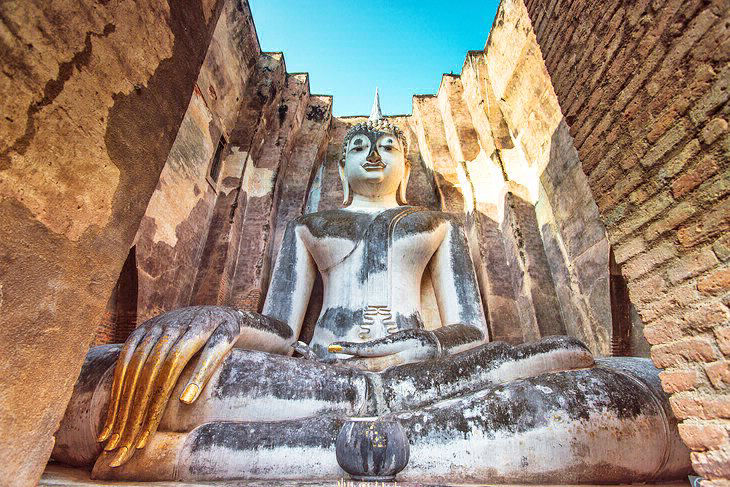
Wat Si Chum
Visitors to Wat Si Chum in Sukhothai Historical Park, will be especially impressed by the mondhop: a huge, windowless cuboid construction that stands on a high pedestal. Built in the 14th century, the temple is easily recognizable because of its 15-meter-tall silver seated Buddha leaning against a brick wall in the open.
A narrow enclosed staircase on one of the southern walls leads to the roof and to beautiful open views of the park. The enclosed stair passage was once home to engraved slates featuring different images of Buddha. Ruins of another temple and a brick building that contains a seated Buddha can also be found in the area.
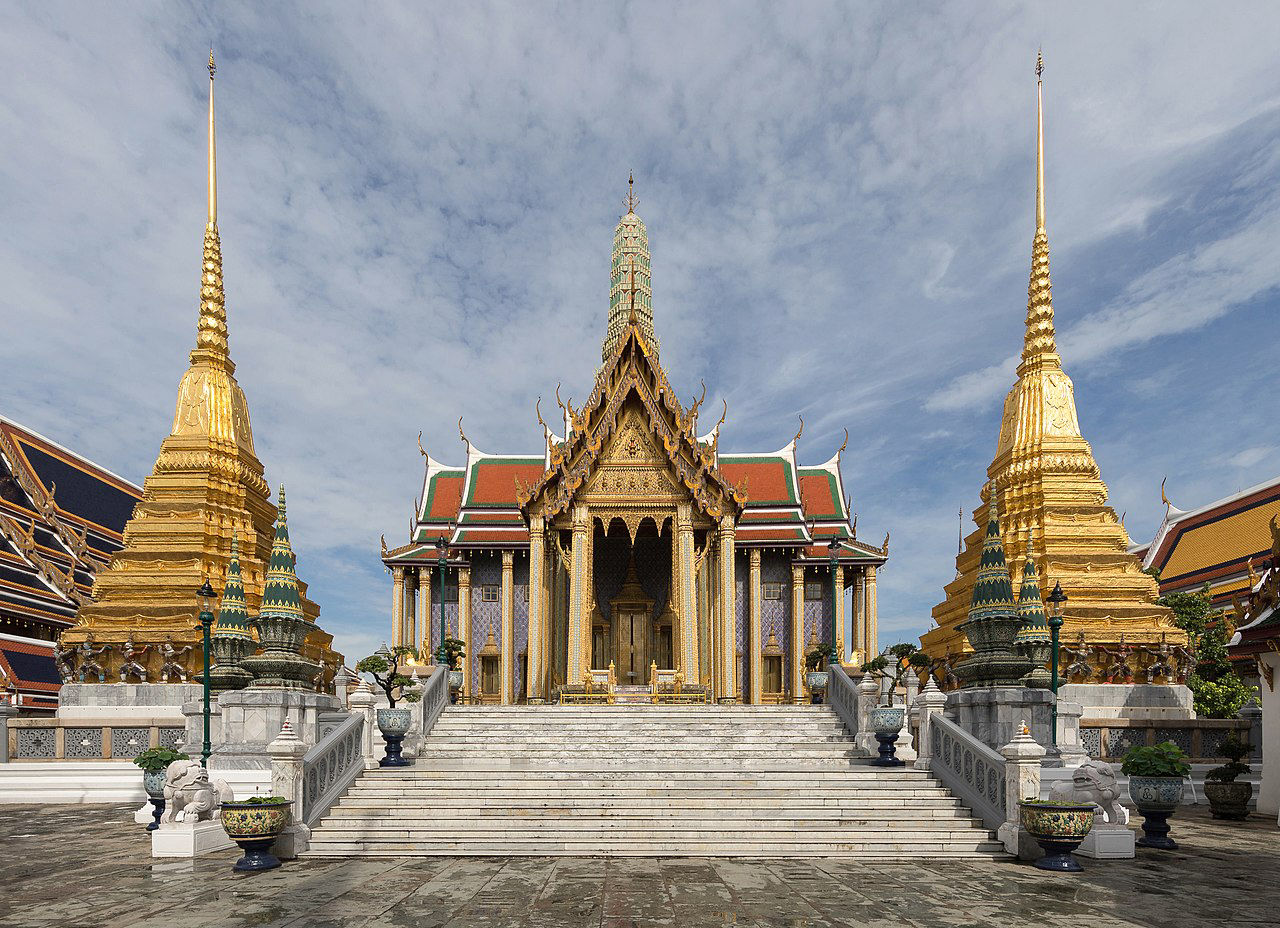
Wat Phra Kaew
The Emerald Temple (officially Wat Phra Kaew) is Thailand's most famous and most sacred temple. It's located inside the grounds of the Grand Palace, and it is home to the statue of the Emerald Buddha, considered the protector of Thailand.
Despite its name, the statue isn't made of emerald but of a deep green, single piece of jade stone. It stands 66 centimeters tall, and it's dressed in a special cloak changed personally by the king three times a year, as the seasons change.
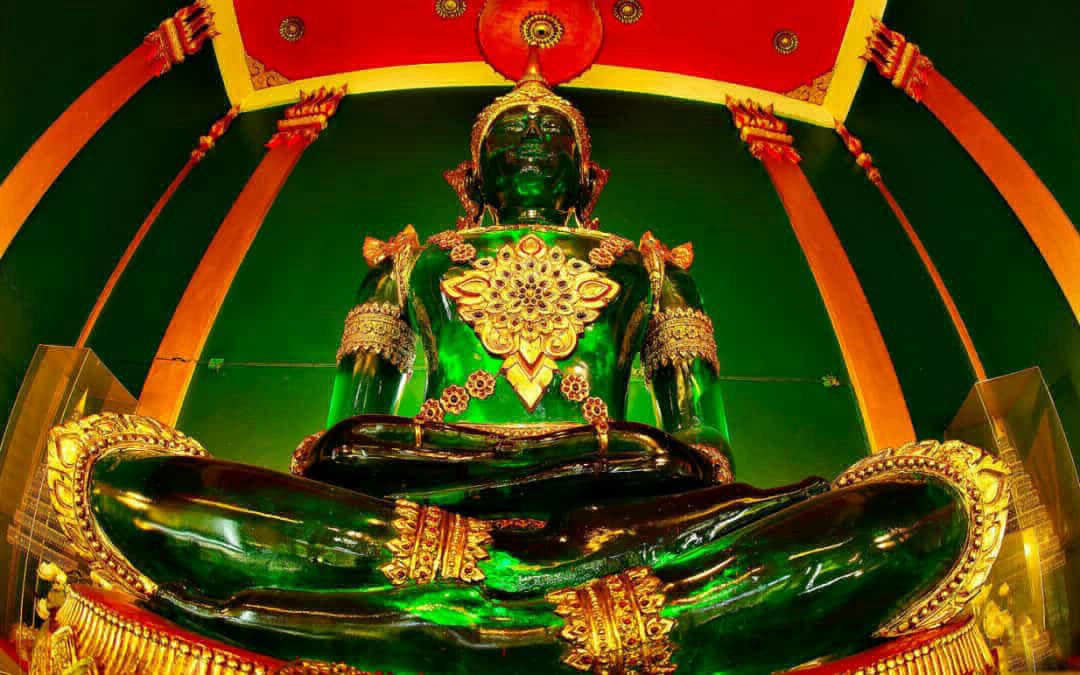
The Emerald Buddha sits on a gilded altar, in a wat decorated in shiny green and orange tiles, surrounded by mosaics and marble. It's a stunning room meant to honor the importance of the statue. Outside the entrance to the temple, two giant yakshis (mythical demon giants) guard the temple. Read More: The Grand Palace and Wat Pho
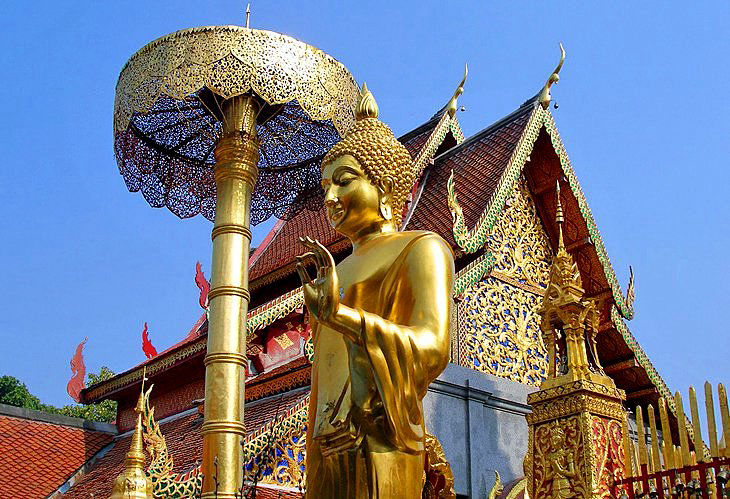
Wat Doi Suthep
Chiang Mai is home to one of the country’s most stunning temples, known as Wat Doi Suthep. It sits perched atop a steep hill (known as Doi Suthep), and on a clear day, the golden chedi of the temple can be seen from the city despite being around 17km away by road. It was built in 1383 during the Lanna period and offers stunning views of the city and surrounding area. To get up to the temple you will need to catch a taxi or songthaew or use the cable car.
The temple complex is vast and beautifully ornate and is considered to be one of the most sacred pilgrimage spots in all of Thailand, attracting up to 120,000 visitors per month. In addition to the temple complex, a short distance further along the main road is Bhuping Royal Palace Gardens and a hill tribe village where you can buy all manner of handicrafts and souvenirs and get some great photos.
Hotels in Thailand
Before you travel to Thailand, we recommend booking your hotel stay with Agoda to get the best deals and guaranteed lowest rates. Agoda will match any price on the web, or refund the difference. You can check availability and book at specific destinations by clicking on the Agoda banners provided on this website:
A Bangkok Temple tour is a must-do because it will introduce you to Wat Pho, home of the Reclining Buddha, and Wat Phra Kaew, otherwise known as The Temple of the Emerald Buddha. It will also take you to Thailand’s foremost historical and cultural landmark, The Grand Palace.